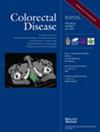Does timing of ileostomy closure impact postoperative morbidity?
Abstract
Aim
Reversal of diverting loop ileostomy (DLI) traditionally occurs at ≥12 weeks after formation. Early closure has been performed in attempts to reduce DLI-associated morbidity. Therefore, the aim of this study was to determine whether time to stoma reversal impacts postoperative morbidity.
Method
A retrospective review was conducted using institutional-level American College of Surgeons National Surgical Quality Improvement Program data for adult patients who underwent DLI closure between January 2012 and December 2021 across a multistate health system. Time to DLI closure was stratified into three groups: ≤12, 12–24 or 24–36 weeks. Additional data were obtained from the electronic medical record. The primary outcome was major morbidity after DLI closure.
Results
A total of 482 patients underwent DLI closure. Eighty four patients underwent closure at ≤12 weeks (17.4%), 300 at 12–24 weeks (62.2%) and 98 at 24–36 weeks (20.3%). The most common diagnosis at DLI formation was cancer (n = 211, 43.8%). Patients in the ≤12 weeks closure group more commonly had ulcerative colitis or diverticular disease and a lower American Society of Anesthesiologists class than patients with closure at 24–36 weeks (p < 0.05). There were no significant differences in complication severity, overall major morbidity or its individual components amongst the time to DLI closure groups. There were no differences in anastomotic leaks or need for laparotomy. On multivariable analysis, immunosuppressive therapy and preoperative haematocrit <30% were significant risk factors for major morbidity after DLI closure.
Conclusion
Major morbidity did not differ by time to DLI closure group, indicating that closure at ≤12 weeks is safe in selected patients.

 求助内容:
求助内容: 应助结果提醒方式:
应助结果提醒方式:


